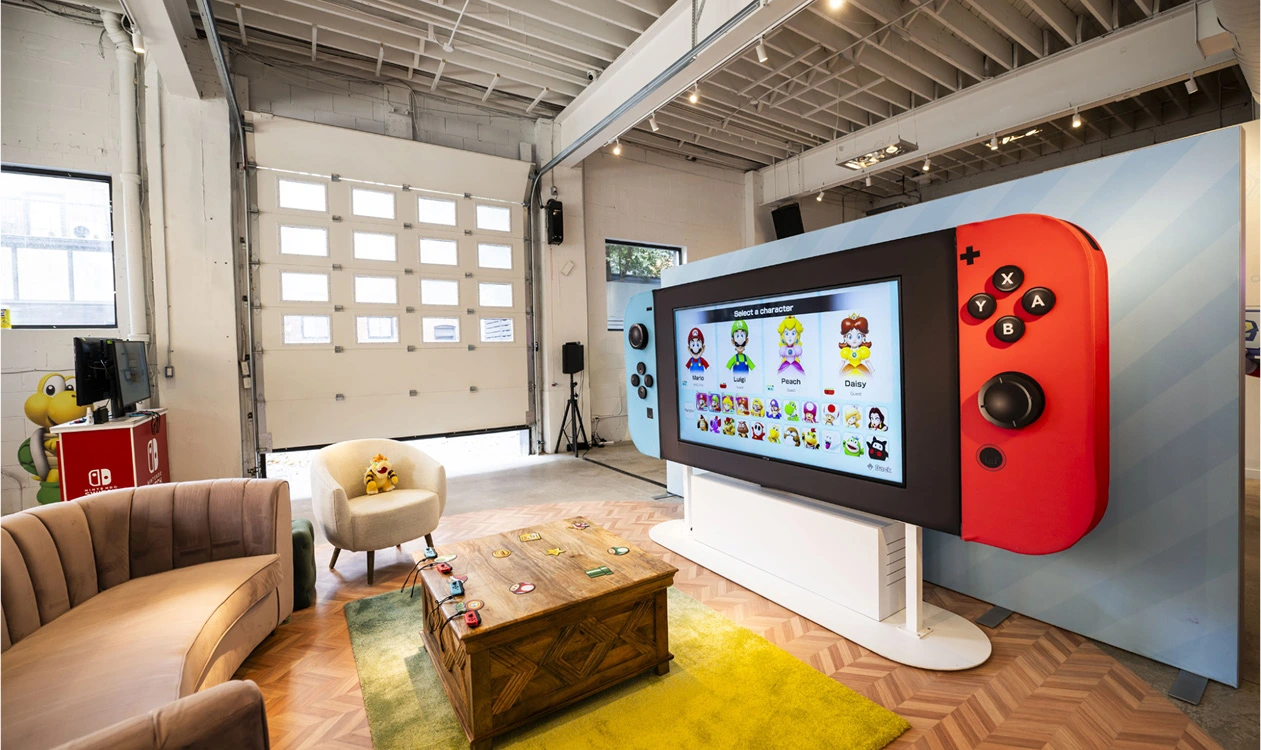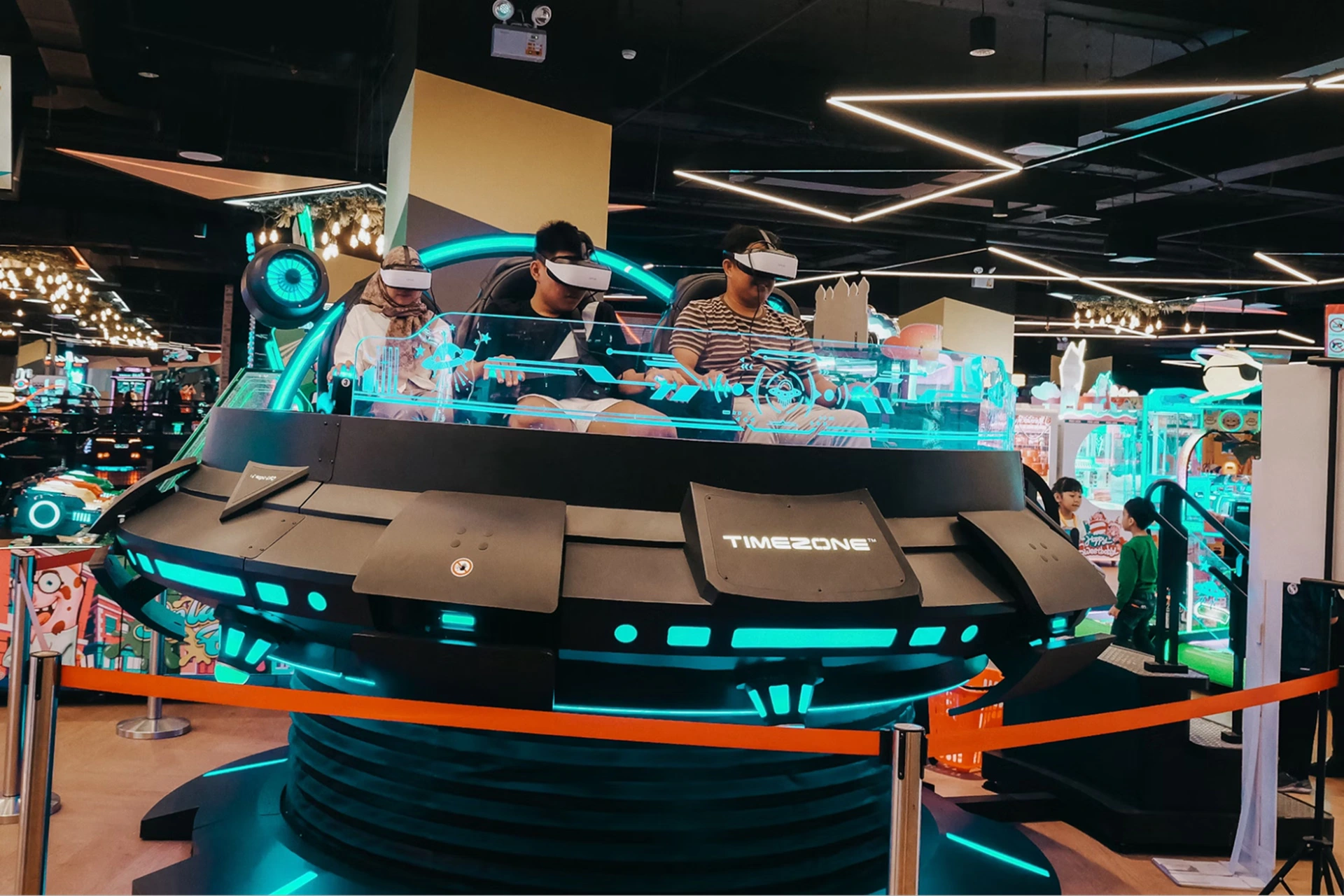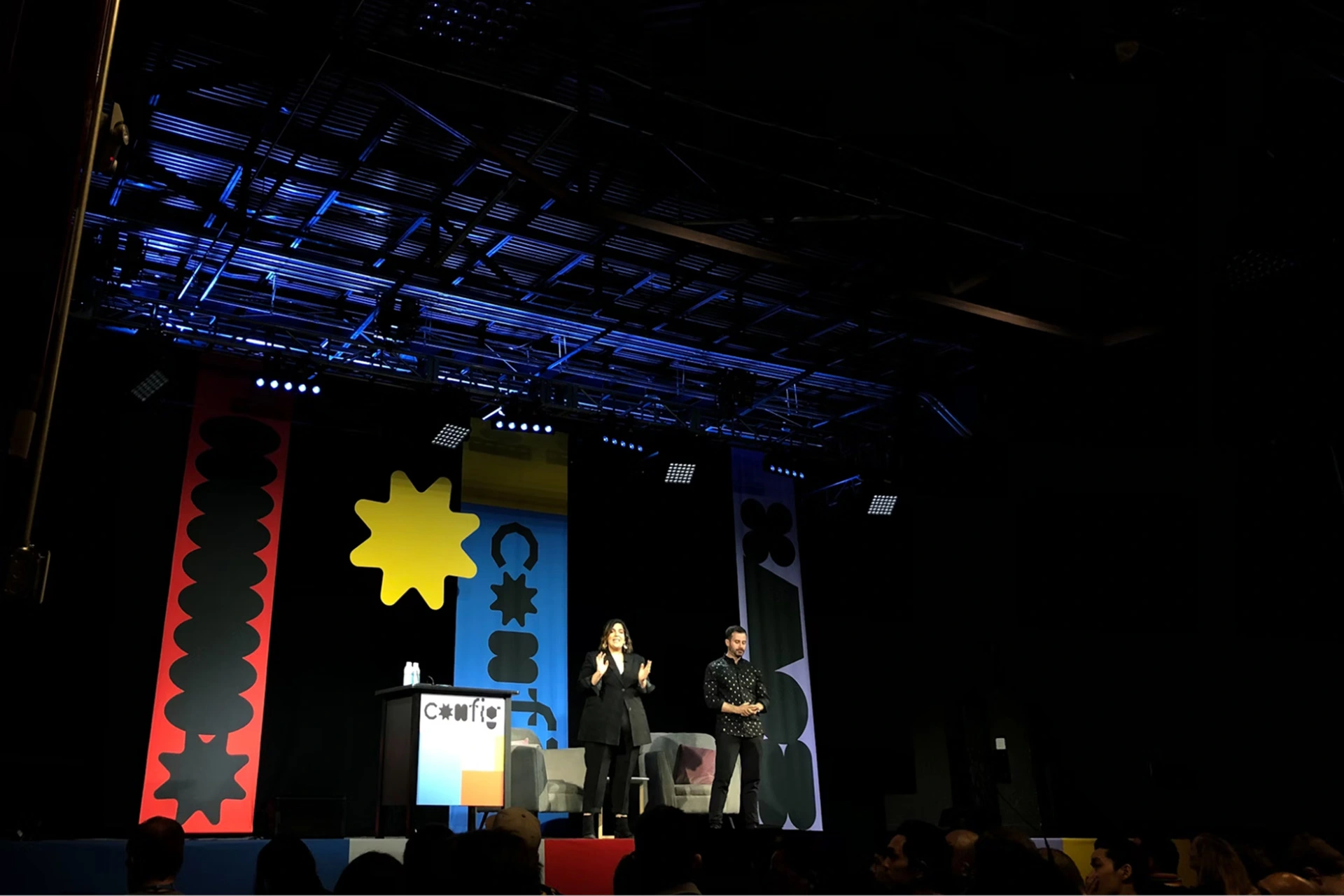
You're Invited
Sign up for our newsletter to receive the latest news and updates from Concierge Club
Thank you! Your submission has been received!
Oops! Something went wrong while submitting the form.

June 18, 2025

Achieving brand activation and engagement is challenging at crowded tech conferences, where attendees may overlook product booths that don’t easily capture their attention. However, looking for innovative or out-of-the-box solutions can help your company and product standout among the clutter and draw crowds.
Tech conferences are a prime stage for showcasing innovation, but standing out is harder than ever. With rows of identical booths, flashing touchscreens, and crowds flocking to big-name brands, even the most groundbreaking companies risk blending into the background. The uniform layout and sensory overload create a sea of sameness that can drown out your message.
Luckily, creative brand activation ideas can help you stand out and leave a lasting impression. From games and contests to user-generated content and immersive mixed reality experiences, these activations break through the noise of typical tech conferences.
This post will explore what makes these ideas effective, why they work in the tech conference space, and provide real brand activation examples to inspire your next conference event.
Event pop-ups have been and remain a staple at tech conferences for years. These temporary, interactive spaces help guests further explore a brand’s offering, whether that be a product or service, taking the form of themed rooms, experiential lounges, or hands-on labs.
While immersive pop-ups aren’t new, their strength lies in their execution. For example, you can incorporate interactive elements and hands-on displays that enable users to engage with your product or service in real-time.
Personalize that experience or add a storytelling element (whether real or fictional), and suddenly a run-of-the-mill pop-up becomes a resonant touchpoint that attendees will remember.
Virtual and augmented reality experiences can teleport users into virtual worlds (created by overlays) that make mundane settings and scenarios more immersive and memorable. When used at tech conferences, VR/AR-enabled devices allow your guests to interact with products, stories, games, and experiences that simply can’t be replicated in the physical realm.
For example, you can create product demos using kinesthetic sense (the sense of movement) to demonstrate features and benefits, which can resonate deeper than just seeing or touching a product.

Image Source: Unsplash
Incorporating game mechanics such as points, leaderboards, and challenges feeds directly into the reward systems of the brain. They can immerse visitors in an interactive experience that’s more likely to engage and convert them into paying customers.
Games encourage attendees to become active participants in a product experience. This results in increased booth traffic, longer dwell times, and greater social sharing. Additionally, games provide an opportunity to collect valuable data on attendee behavior, provided that they consent to it.
The key to a gamified brand activation campaign is to create a game not just for the sake of making one, but to demonstrate or illustrate how your product or service works.
Mobile apps may be common in event marketing, but there’s still room for them in innovative brand activation ideas. A custom app developed for tech conferences can allow you to centralize details and engagement tools for prospective attendees. You can also differentiate this app from a more brand-agnostic one that’s currently associated with your brand.
This event-specific app should contain features related to the event itself that may not be in other branded apps, such as a live stream, gamified challenges, and contest registration. Ensure it’s built using your brand values, visual identity (including logo, colour palettes, and fonts), and verbal identity (such as taglines, tone of voice, and messaging).
Branded event apps create experiential brand activation because they’re dedicated to the tech conference itself. Attendees who download the app are likely to use it and engage with the event, even if it’s only to submit registration information.
Nevertheless, the app makes event engagement and consented data collection easier, which you can use for further communications.
User-generated content (UGC) fuels many social media brand activation campaigns. However, UGC has its place for tech conferences as well.
Attendees create and share photos, videos, testimonials, and other types of content related to the event itself or the brand behind it. UGC campaigns can also be gamified, turned into a contest, or woven into other brand activation ideas to increase attendee engagement and boost brand awareness.
Through UGC, consumers participate by submitting what you ask of them, which is the purest form of engagement. When attendees send you content, you can capture user behaviour, acquire participation metrics, and much more.
Additionally, UCG creates authenticity and social proof, fostering a sense of community and ownership that reinforces positive perceptions of your brand.
If you want your target audience to care about your event, make it about them. With personalized experiences, you can use data and technology to create experiences and content tailored to the preferences of individual event guests.
Of course, personalization is broad and can assume various forms. You can think of event personalization in stages to be more specific:

Image Source: Unsplash
Hybrid events have become one of the more popular event activation ideas, with much of their success and popularity resulting from COVID-19 restrictions. The pandemic forced brands to limit physical attendance and combine on-site and virtual elements in events, a strategy that proved effective even after the pandemic ended.
If your brand plans to make appearances at tech conferences, consider hybridization. You can do the following:
Hybrid events create strong brand activation efforts by reaching larger audiences beyond the venue and encouraging deeper engagement through interactive experiences. This combination makes them a smart, results-driven brand activation idea for tech conferences.
Learn more: How to Successfully Plan a Hybrid Event
Contests and competitions remain timeless brand activation ideas, thanks to their ability to spark audience interaction and offer incentives that drive participation. They have some of the highest engagement rates seen among all forms of content. With an average conversion rate of 34%, holding these experiences at events can be a game-changer for your brand activation project.
Aside from their engagement potential, contests allow for unfettered creativity. They can take the form of games, user-generated content submissions, trivia and much more; your imagination is the only limit.
Inserting a branded contest into a tech conference event can also generate significant buzz depending on the mechanics and the prize.
Influencers still hold tremendous power when it comes to brand amplification. A tech thought leader, creator, or industry expert at an event can draw significant crowds, especially if you announce it in advance. After all, they’re well-known, well-respected figures in the space.
Securing a collaboration can build anticipation and extend your brand’s reach, as it becomes associated with a well-known influencer. Additionally, including interactive elements such as Q&As, moderated panels, or lead workshops provides opportunities for attendees to speak directly with influencers and create significant engagement.
However, one of the biggest advantages of having an influencer at tech conferences is the enhanced credibility it provides. If a trusted figure endorses your brand and product, attendees are more likely to view you as a “better choice,” resulting in significant brand lift, sign-ups, and other engagements.
Art and technology may seem at odds, but they can complement each other beautifully—just look at Apple.
Art installations are among the more innovative forms of experiential brand activations. They humanize tech, spark emotional connections, and stand out in a sea of corporate booths, naturally drawing crowds and attention.
All types of art installations, whether they’re immersive 3D visualizations, static polygonal structures, or theatrical performances, encourage photo ops and social shares. That type of engagement, on its own, can increase brand awareness and put your name in front of a broad audience, while generating interest in your products or services.
These installations can leverage your product itself, incorporating tech and interactive elements while drawing attention to your booth. One way to do this is by collaborating with local artists who can lend their talents to promote your brand.
Brand activation at tech conferences refers to the process of creating memorable moments that foster a genuine relationship between a brand and its audience, resulting in increased engagement and social shares.
Emphasize that successful brand activations at tech conferences drive measurable ROI by increasing qualified leads, boosting brand visibility, and creating tangible industry relationships that support growth. Present engagement metrics, lead conversions, and sales data from previous events as evidence for potential future success.
Technologies such as Virtual Reality (VR), Augmented Reality (AR), and AI-powered personalization are gaining major traction as brand activation ideas. Other methods gaining steam include wearable integration (for real-time data), hybrid and multi-channel engagement, and multi-sensory experiences.
A brand activation drives deep attendee engagement, generates qualified leads, and creates memorable experiences to yield a measurable ROI and foster strong brand relationships. Logos and talks boost visibility and brand recognition, but lack the interactive and immersive power of live brand activations and the connections they can create.
Commanding attention in today’s tech conferences requires distinction more than presence. Strategic event activation ideas brought to life by an expert experiential marketing team can turn that vision into a reality.
At Concierge Club, we transform your booth from just another stop into a memorable experience. Specializing in crafting elevated brand activations, we design marketing campaigns while seamlessly managing strategy, logistics, and production.
Whether it’s an immersive installation, a gamified experience, or an elegant branded moment, our award-winning team of experts ensures your presence leaves a lasting impression on both live and virtual audiences.
Ready to elevate your brand activations at tech conferences? Contact us to begin planning.